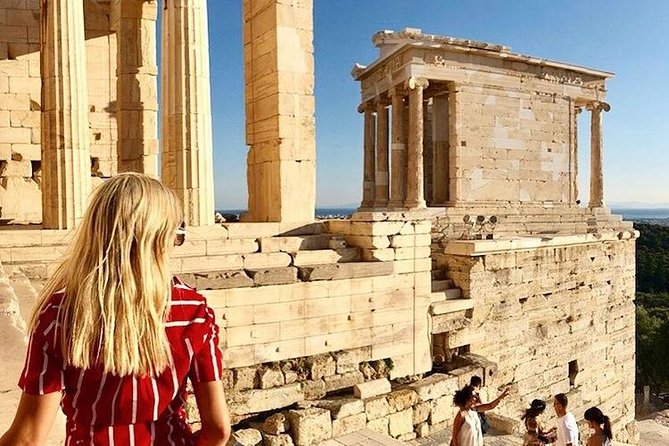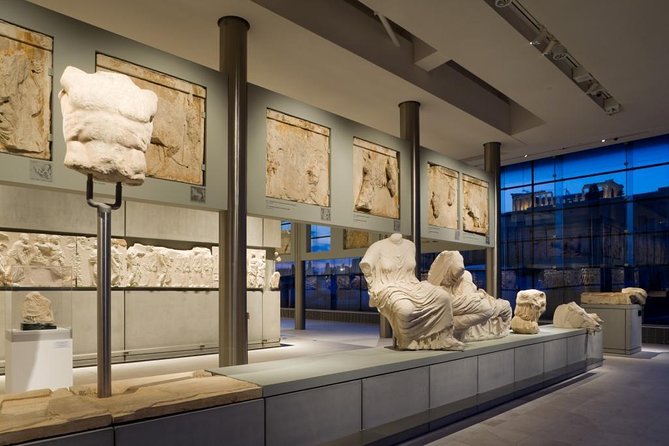
Mycenae, Epidaurus, Nafplio, Corinth Canal Private Full Day Trip From Athens
Settle in your private car and admire the scenery as you move into the Peloponnese. Take great photos at the Corinth Canal and after around 30 minutes, arrive at the ancient hilltop city of Mycenae and enjoy a walking tour of the ruins of this once powerful, fortified settlement. Afterward, stop in the pretty seaport of Nafplio. Stroll the narrow alleys with the colorful bougainvillea trees and taste delightful Greek dishes before continuing to ancient Epidaurus, the mythological birthplace of Asklepios, the Greek god of healing. Tour the spectacular relics, including the UNESCO-listed Sanctuary of Asklepios and ancient theater of Epidaurus.
-You get to admire stunning Archeological Sites
-Taste local cuisine and hear stories about the visited sites
-Walk around one of the most beautiful and picturesque cities in Greece
-Visit Epidaurus, birthplace of Apollo's son and an ancient place of healing
- Enjoy a scenic drive along the Saronic Gulf coast.
Options
Mycenae, Epidaurus, Nafplio, Corinth Canal Private Full Day Trip From Athens
Pickup included
What's included in Mycenae, Epidaurus, Nafplio, Corinth Canal Private Full Day Trip From Athens
(Subject to Option Inclusions)Itinerary
Corinth Canal
Corinth Canal connects the Gulf of Corinth in the Ionian Sea with the Saronic Gulf in the Aegean Sea. The canal was initially proposed in classical times and a failed effort was made to build it in the 1st century AD. The canal was dug through the isthmus at sea level and has no locks. It is 6.4 kilometres (4 mi) in length and only 21.4 metres (70 ft) wide at its base, making it impassable for many modern ships. It is currently of little economic importance becoming mainly a tourist attraction. From the bridge, you can enjoy wonderful views and admire the steep limestone walls while you observe the vessels passing by the narrow canal.
Archaeological Site Mycenae
Mycenae 'Rich in Gold', the kingdom of mythical Agamemnon—first sung by Homer in his epics—is the most important and richest palatial centre of the Late Bronze Age in Greece. Its name was given to one of the greatest civilisations of Greek prehistory, the Mycenaean civilisation. The site, which is inscribed in the World Heritage List since 1999, preserves the imposing ruins of the city that dominated the eastern Mediterranean world from the 15th to the 12th century B.C. and played a vital role in the development of classical Greek culture. Mycenae was founded between two tall conical hills, Profitis Ilias and Sara, on a low plateau dominating the Argive plain and controlling both the land and sea routes. The archaeological site comprises the fortified acropolis and the surrounding funerary and habitation sites, which are located mainly to its west and southwest. Most of the visible monuments date to the centre's great prosperity period, from 1350 to 1200 BC.
Archaeological Museum of Ancient Mycenae
At the foot of the acropolis is situated the Archaeological Museum of Mycenae, a modern masterpiece for the area and an attraction point for thousands of tourists, who come to this sacred place to admire part of the findings of "Atrides’ treasure". The exhibits (almost 2,500) are dated from the Middle Bronze Age to the Hellenistic Period and come from Mycenae and its surrounding area.
Inclusions
- Private transportation
- Bottled water
- English speaking pro drivers with deep local knowledge (not licensed to accompany you in any sites)
- Air-conditioned vehicle
- Culinary Welcome Gift
- Certified Tour Guide inside Archaeological sites (Available upon request with extra cost)
- Gratuities
- Palamidi Castle
- Mycenae
- Epidaurus
- Specialized infant seats are available
- Suitable for all physical fitness levels
Meet
Pickup and Dropoff
Choose to be picked up from a list of locations
Additional Information
We pickup from all Athens hotels or other accommodations.






